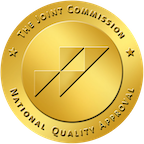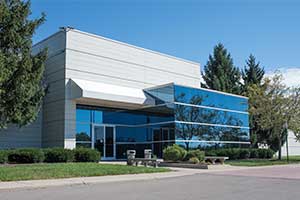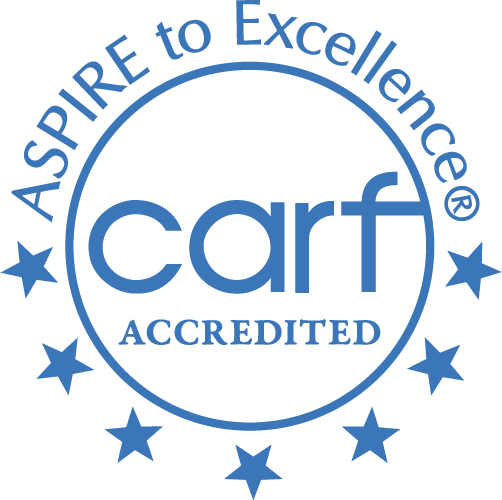Skip To Rehab Listing
Treatment Service Settings and Recovery Methods
Bridgewater's numerous rehabs, a number of which are listed below, handle a problem that is widespread in cities throughout the US: drug and alcohol abuse. These centers counter this problem locally by providing sites and services that are convenient for patients within the area. These settings include: outpatient substance abuse counseling, outpatient detox programs, inpatient drug and alcohol rehab programs, long term rehab programs, short term rehabs.
Drug and alcohol rehab programs utilize several approaches, from well-established methods to newer techniques such as: vocational rehabilitation services, brief intervention approach, trauma therapy, group therapy, activity therapy, dual diagnosis drug rehab. The outcome is an array of programs that clear the path to achievable sustained sobriety for numerous patients.
Special Programs for Substance Abuse Offered by Rehab Facilities
Those struggling with alcohol or drug addiction often require individualized support to recover. That is why alcohol and drug treatment programs in Bridgewater deliver special resources that help clients within their individual situations. Some of these programs are listed here: treatment for spanish-speaking clients, child care for clients children, residential beds for client's children, programs for the hearing impaired, persons with serious mental illness, substance abuse education.
Treatment Payment Options in Bridgewater, NJ.
Patients encounter varied economic conditions, which is the reason addiction rehabilitation programs offer multiple payment options, including: private pay, private medical insurance, sliding fee scale, military insurance, state education funds, other state funds.
Funding should not be an obstacle to addiction treatment. Rehab centers direct clients toward the financing alternatives that help their personal economic needs.
With a variety of facilities, programs, services, methods and payment options, Bridgewater offers clients multiple alternatives when it comes to seeking recovery from substance abuse.
Commonly Asked Questions about Addiction and Treatment
What are the symptoms of opioid addiction?
Opioid addiction is a chronic condition characterized by compulsive use of opioids despite harmful consequences. Recognizing the symptoms of opioid addiction can help in providing timely intervention and support for the affected individual. Some common symptoms of opioid addiction include:
- Physical symptoms: Opioid addiction can cause various physical symptoms, such as constricted pupils, drowsiness, slowed breathing, constipation, and itching. The person may also exhibit signs of intoxication, like slurred speech and impaired coordination.
- Behavioral changes: Opioid addiction can lead to changes in behavior, such as increased secrecy, social withdrawal, mood swings, and unexplained absences. The person may neglect personal hygiene, appearance, or responsibilities in favor of obtaining and using opioids.
- Tolerance and withdrawal: Over time, individuals with opioid addiction may develop a tolerance, requiring higher doses or more frequent use to achieve the desired effects. If the person stops using opioids, they may experience withdrawal symptoms, such as restlessness, muscle and bone pain, insomnia, diarrhea, vomiting, and cold flashes with goosebumps.
- Loss of control: A key symptom of opioid addiction is the inability to control opioid use, even when the person wants to stop. They may spend an excessive amount of time and resources obtaining, using, or recovering from the effects of opioids.
- Continued use despite negative consequences: Individuals with opioid addiction often continue using opioids despite experiencing negative consequences, such as health problems, relationship issues, financial difficulties, or legal troubles.
- Preoccupation with opioids: Opioid addiction can lead to a preoccupation with the drug, resulting in the person prioritizing opioid use over other aspects of their life, including personal relationships, work, or hobbies.
- Risk-taking behaviors: Opioid addiction can lead to increased risk-taking behaviors, such as using opioids in dangerous situations, sharing needles, or engaging in criminal activities to obtain the drug.
- Neglecting relationships: Opioid addiction can strain personal relationships, as the person may prioritize their opioid use over their connections with friends and family.
- Changes in sleep patterns: Opioid use can disrupt sleep patterns, causing the person to experience insomnia or excessive sleepiness.
- Cravings: Individuals with opioid addiction may experience strong cravings for opioids, often leading to compulsive drug-seeking behaviors.
What are things I should look for when choosing a rehab?
When choosing a rehab facility for yourself or a loved one, it's important to consider several factors to ensure the best fit and the highest likelihood of a successful recovery. Here are some key aspects to look for when evaluating potential rehab centers:
- Accreditation and Licensing: Ensure the facility is accredited by a reputable organization and licensed by the appropriate state or national authorities. This helps guarantee that the center meets established standards for quality care and safety.
- Treatment Approaches: Evaluate the treatment methods and therapies offered by the rehab center. Look for evidence-based approaches, such as cognitive-behavioral therapy, motivational interviewing, and medication-assisted treatment, which have been proven effective for treating addiction.
- Specialized Programs: Depending on your needs or the needs of your loved one, you may want to choose a rehab facility that offers specialized programs, such as those tailored for specific substances, co-occurring mental health disorders, or unique populations (e.g., veterans, LGBTQ+ individuals, or adolescents).
- Customized Treatment Plans: A high-quality rehab facility should develop an individualized treatment plan for each client, taking into account their unique needs, goals, and circumstances. This ensures that the treatment approach is tailored to provide the best possible support for lasting recovery.
- Duration of Treatment: Consider the length of treatment options offered by the facility. While shorter programs (e.g., 28-30 days) may be sufficient for some, others may benefit from longer stays (e.g., 60-90 days or more) to fully address their addiction and underlying issues.
- Aftercare and Continuing Support: Look for a rehab facility that offers aftercare services, such as ongoing counseling, support groups, or transitional living arrangements. These services can provide essential support during the transition back to everyday life and help maintain long-term recovery.
- Qualified Staff: Ensure the rehab center employs experienced, licensed, and compassionate professionals, such as therapists, counselors, doctors, and nurses, who are trained in addiction treatment and recovery.
- Family Involvement: Some rehab centers offer family programs or therapy sessions to involve family members in the recovery process. This can provide valuable support and help address any family dynamics that may contribute to addiction.
- Cost and Insurance: Consider the cost of treatment and whether the rehab center accepts your insurance plan or offers payment assistance options, such as sliding-scale fees or financing.
- Facility Amenities and Environment: Take into account the physical environment and amenities of the rehab center. A comfortable, clean, and safe environment can contribute to a more positive and focused recovery experience.
What is the Cognitive Behavioral Method for treating addiction?
"The Cognitive Behavioral Method, or Cognitive Behavioral Therapy (CBT), is an evidence-based psychological approach for treating addiction that focuses on identifying and modifying dysfunctional thought patterns, beliefs, and behaviors that contribute to substance use disorders. CBT is grounded in the understanding that an individual's thoughts, feelings, and behaviors are interconnected, and by changing maladaptive thought patterns and behaviors, they can better manage their emotions and reduce their reliance on addictive substances.
CBT for addiction treatment typically involves the following key components:
- Identifying triggers: The first step in CBT is to help individuals recognize the situations, thoughts, or emotions that trigger their substance use. This awareness enables them to develop strategies to manage these triggers effectively and avoid relapse.
- Challenging negative thoughts: CBT helps individuals recognize and challenge irrational or negative thoughts and beliefs that contribute to their addiction. By examining the evidence for and against these thoughts and replacing them with more balanced, rational alternatives, individuals can better control their emotions and behaviors.
- Developing healthy coping strategies: CBT focuses on teaching individuals new, adaptive coping skills to deal with stress, cravings, or negative emotions without resorting to substance use. These strategies may include relaxation techniques, problem-solving skills, assertiveness training, or time management, among others.
- Building self-efficacy: CBT helps individuals build confidence in their ability to cope with high-risk situations and resist the urge to use substances. This increased self-efficacy can contribute to long-term recovery and reduce the likelihood of relapse.
- Relapse prevention: CBT incorporates relapse prevention techniques to help individuals identify early warning signs of relapse and develop a plan to address these signs effectively. This may involve practicing coping strategies, seeking support from others, or making adjustments to their environment or daily routine.
CBT for addiction treatment can be delivered in individual, group, or family therapy settings and is often used in conjunction with other treatment modalities, such as medication-assisted treatment (MAT), peer support groups, or motivational interviewing. CBT has been found to be effective in treating various substance use disorders, including alcohol, opioid, and stimulant addiction, as well as co-occurring mental health disorders, such as anxiety and depression."














